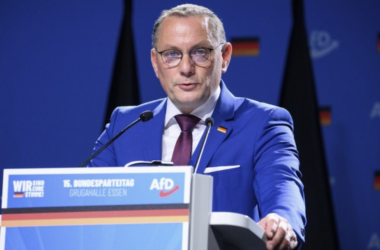As EU leaders gather in Brussels for yet another summit, the hottest debate on the table is the so-called Kallas Plan—a €40 billion military aid package for Ukraine, spearheaded by EU foreign policy chief Kaja Kallas. While she claims there’s widespread support, the reality is far messier.
The plan sets aside €5 billion for artillery shells—despite past failures to deliver even half that amount—plus funding for air defense, drones, missiles, and fighter jets. But while some EU nations are eager to rush it through, the actual size of the package, and who pays what, remains fiercely contested.
Wealthier nations like France, Italy, and Spain aren’t thrilled about shouldering the biggest financial burden, while smaller economies back a GDP-based contribution model. To sweeten the deal, some countries want previously donated aid to Ukraine deducted from their new obligations, ensuring the final figure looks larger on paper than in reality.
Adding another twist, EU leaders are eyeing €18 billion in windfall profits from frozen Russian assets to offset costs—because, let’s face it, nobody wants to foot this bill willingly.
Kallas insists the EU must act now to “show resolve,” though not everyone’s on board. Hungary and Slovakia outright reject further military aid, pushing instead for diplomacy in line with Trump’s stance. Expecting their vetoes, Brussels is already crafting a workaround: a coalition of the willing that could bypass unanimity and push the plan through.
Hungary’s Foreign Minister Péter Szijjártó didn’t hold back, making it clear Budapest won’t “be dragged into this” or let Hungarian taxpayers fund Ukraine’s arms. Slovakia, too, plans to opt out.
Yet, Kallas’ coalition may stretch beyond the EU, with the UK and Norway possibly joining the effort—though their level of involvement remains uncertain.
Bottom line? The EU’s latest Ukraine aid package is a high-stakes balancing act between political posturing and financial reality. Who pays, how much, and whether it even happens as planned—those are the real questions Brussels is scrambling to answer.




